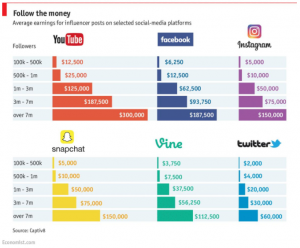Many small businesses are missing out on an easy way to get new clients. Customers are ready to buy, and looking for a business just like yours every day.
Most consumers turn to the web when looking for a new product or service, especially when interested in a local solution.
Whether you’re a doctor, realtor, car dealer, restaurant or a nail salon, it doesn’t make much difference in this case. Managing your online reviews and reputation is a key part of marketing, along with developing customer acquisition and growing your business.
For anyone that’s tried, they’ll often tell you it’s easier said than done when it comes to getting online reviews. But there are a few things you should know which can help.
88% trust reviews as much as personal recommendations
First and foremost, is exceeding customer expectations with an exceptional product or service. Most know or have heard this at some point, but only a handful follow through. Make it easy for the customer to give what you want by going above and beyond.
68% say positive reviews make them trust a local business more
The key to generating reviews is making it part of a process where employees would request them soon after you’ve under promised and over delivered to yet another happy customer. Just like you might send an invoice once the job is done, sending a review request is another step in the process. Choosing the right time to ask for a review is certain to help, and if left too long your odds diminish.
From a day or two up to a week, but not much more, is usually the optimal time to ask. People are busy, so it sometimes it requires a followup, maybe two, but generally don’t ask much more than that.
87% of people say that a business need a rating of 3-5 stars before they will use them
For every star that a business gets for their online reviews, this can be about a 5-9% increase in business revenue as well.
While you would think that it’s all about the 5-star reviews, studies show that a rating between 4.2 stars and 4.5 stars actually works best, and the closer the rating gets to 5 stars, there is often a decline in the likelihood of a purchase. Possibly too much of a good thing, or too good to be true factor.
94% of consumers would use a business with a four star rating
It’s also important to consider the flip side of things, because if you aren’t monitoring your online reputation and what those online reviews say, then you aren’t managing it.
Since you can’t please everyone all the time, negative reviews can be part of life. Consider this an opportunity to resolve and learn from. At the same time, if you’re replying to less than satisfied individuals and trying to right a wrong, others will notice.
82% of consumers tend to look specifically for bad reviews
It’s said that a customer might tell an average of 9 people about good experiences, and tell as many as 16 people (nearly twice as many!) about poor experiences. The web makes it easy for unsatisfied customers to vent through social media and review sites, and if you think no one is paying attention you would be sorely mistaken. Just on Twitter alone there are over 1 million tweets each week about customer service, and 80% of them are negative in nature. The average business only hears from just under 5% of its dissatisfied customers, so the ones that are vocal are usually doing you a favor. When you know the problems, you get the chance the fix them. If you work directly with the customer, this can change their stance, and sometimes their opinion. In a few cases, they might even praise you for helping them to resolve the issue.
Retailers should see great service not as a cost, but a sales opportunity, and a way to differentiate themselves from the competition so they can earn a customer’s admiration and repeat business.
When it comes to your brand, it’s not what you say about yourself, but what others are saying about you.
Business & Finance Articles on Business 2 Community(99)
Report Post





